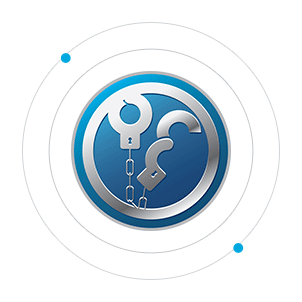6 Ways To Spot Invoice Fraud
Invoice fraud is more common than you'd think. This harsh reality occurs when a cybercriminal, or with invoice fraud, commonly a phisher sends out a false invoice to unsuspecting professionals hoping they'll be convinced of its authenticity.
Invoice templates are free to download and widely available online, making them ideal for phishing attacks and other forms of cyber-criminal activity.
Scam Detectors Most Trusted Websites in Online Security
- Guard.io (100): Surf the web safely. Clean up your browser, remove maliscious extensions and check for privacy violations.
- Incogni.com (100): Delete your personal data from the internet and protect against scams and identity theft.
- ExpressVPN (100) Stay secure and anonymous online - Best VPN Out There
- IPVansish (100) Fast VPN to stay safe and secure online with multiple discount plans.
Sending and receiving invoices can be stressful at the best of times. But the threat of invoice fraud can make these waters even harder to navigate. Fortunately, there are some obvious red flags that you can look out for to protect yourself and your business from being taken advantage of.
Here's 6 ways to spot a fake invoice template that's masquerading as a legitimate one:

1. New Or Unfamiliar Banking Details
Once a third party gains access to a standard invoice template, they may try to redistribute it after adding their banking details to it. It's a telltale sign of invoice fraud.
Every time you receive an invoice, make sure to read and re-read the banking information to match up to a familiar account. If it's your first time receiving an invoice from someone, ask them to validate their details via an encrypted third-party platform.
2. Requests For Abnormal Details
A typical phishing strategy is to try and extract valuable data from a victim using fake invoice templates. If someone delivers an invoice to you for payment but makes unusual requests for private information (such as your social security number), it could be a sign of invoice template fraud.
It is sporadic for a valid invoice to require that kind of information. If you're unsure whether such a request is authentic, make a formal inquiry with the sender and ask for proof of legitimacy.
3. Unusual Time-Sensitive Requirements
Some cyber-criminals use time sensitivity to put pressure on recipients to send money. The average timeframe for sending payment is two weeks, so anything shorter than that could cause concern.
Unless you have spoken at length with a correspondent you trust regarding payment timeframes, urgent-seeming guidelines like this are a red flag. An invoice that states you have 24 or 48 hours to make a payment is highly likely to be fraudulent. The same if it states it will enforce penalties within a concise time frame for non-payment.
4. Spelling Errors
Often, a phisher might find an email address or company name familiar to you to appear authentic. However, because of copywriting and privacy issues, they will never be able to replicate the names exactly. For example, you might receive regular invoices from an email address called [email protected]. A scammer would then create a fake address such as [email protected].
They may also use special characters such as hashtags, @ signs, or asterisks to differentiate themselves from the original sequence. If the spelling of any names or brands on an invoice or invoice email you receive is incorrect, it could indicate a case of invoice template fraud.
5. Different Banking Details
If you regularly receive invoices from the same client or company, a change in bank details should always accompany an official, verifiable statement. Also, if an invoice you've received includes an unfamiliar overseas account or a different bank, you could be dealing with a scam.
If new payment option details are added, such as PayPal or a QR code, these are worthwhile verifying, too, especially if they offer any discounts for using a specific mechanism.
6. Blurry Or Unfamiliar Logo
A perpetrator of invoice fraud can easily download a free invoice template and then add a familiar logo. However, it is unlikely that the logo will be as high in quality or appearance as the real thing.
Sometimes, a similar but non-identical substitute logo may get used. Familiarizing yourself with the logos of the brands you trust is an excellent cautionary practice. If you notice an unusual logo placement, or a pixelated, low-quality version, it is a sign of invoice fraud.
Knowing How To Spot A Fake invoice Template Is Crucial
With the widespread availability of invoice templates, anyone with a computer can create one. This is a significant boon for businesses looking to streamline their invoicing process. However, it also opens the door for scammers, as creating fraudulent invoices is incredibly quick and straightforward. Familiarizing yourself (and your co-workers or employees) with these common red flags will help you avoid an attack.
It is essential to regularly review your understanding of current cyberattack trends to ensure that no sensitive information gets leaked. With access to the correct information, anyone can successfully protect their data and avoid becoming victims of an invoice template scam.
How To Report an Online Scammer
Let your family and friends know about this article by distributing it on social media. You can also officially report scammers and any other suspicious activity to the Federal Trade Commission using this link, below:
How To Protect Yourself More
If you want to be the first to find out the newest scams on a regular basis, feel free to subscribe to the Scam Detector newsletter here. You'll receive periodic emails – we promise not to spam.
Meanwhile, educate yourself with some other fraud-related articles right under this paragraph, so that you know how to stay safe online. Last but not least, use the comments section below to expose other scammers.
5 Ways To Avoid Fraudulent Stock Trading Brokers
Verify a website below
Are you just about to make a purchase online? See if the website is legit with our validator:
vldtr®


TOP 4 MUST-WATCH FRAUD PREVENTION VIDEOS
1. Top 5 Amazon Scams in 2024 2. Top 5 PayPal Scams in 2024 3. How To Spot a Scam Email in 2024
- Latest Posts by Selma Hrynchuk
-
How To Stop Robocalls
- -
Taking Control of Your Data Privacy: Protecting Yourself in 2024
- -
The Urgency of Removing Personal Information from the Internet
- All Posts














Just discovered this site and find it very helpful. Had a lady contact me on Messenger, supposedly with Publisher’s Clearing House, wanting to give me a grant that I did not have to pay back. All I had to do was send money to get the money. The bad part of this was that she managed to also bring a friend of mine into the conversation by having the friend message me vouching for this lady and what a good deal it was. The friend lives in a different state so I didn’t question it until the “friend” wrote a couple of sentences that I knew did not come from the real friend.